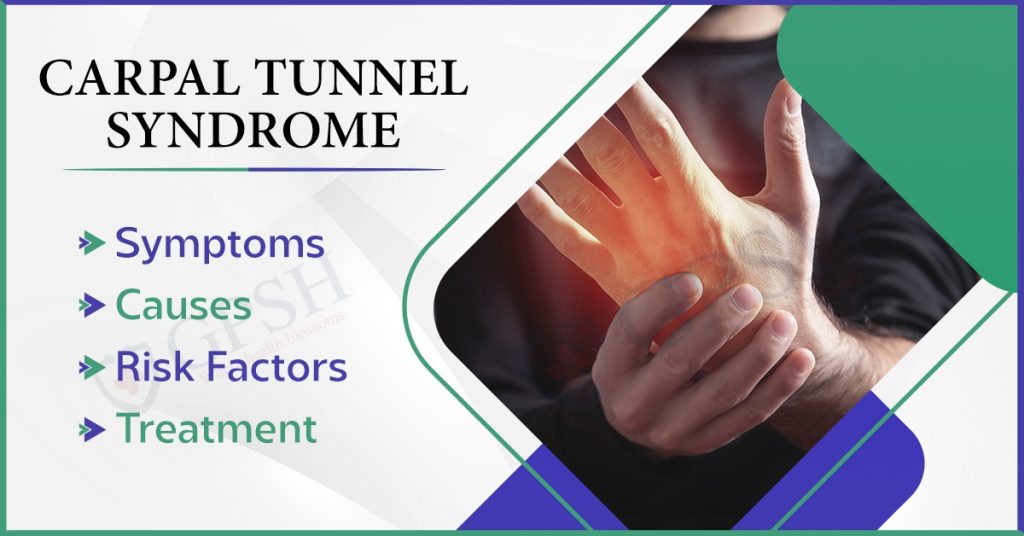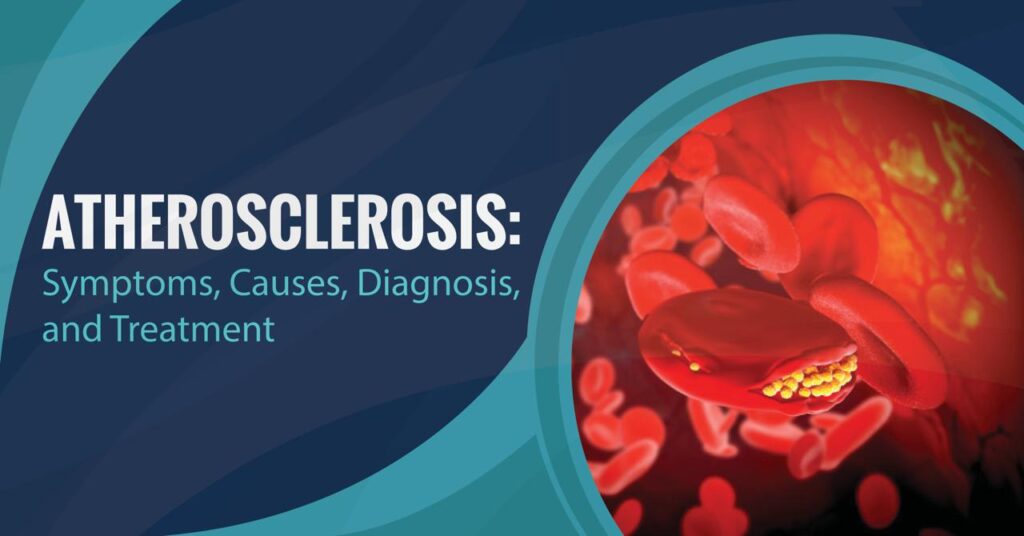Introduction: What is Carpal Tunnel Syndrome?
Carpal Tunnel Syndrome (CTS) is a common condition that affects the hand and wrist, causing pain, numbness, and tingling. The carpal tunnel is a narrow passageway in the wrist formed by bones and ligaments, through which the median nerve and tendons pass. When the median nerve, which runs from the forearm into the palm, becomes compressed or squeezed within the carpal tunnel, it can lead to the symptoms associated with CTS. This condition is often associated with repetitive hand movements, prolonged use of vibrating hand tools, and certain medical conditions. We will delve into the causes, symptoms, and risk factors of Carpal Tunnel Syndrome and explore available treatment options and preventive measures. Understanding the intricacies of CTS is crucial for individuals at risk or experiencing its symptoms, as early intervention and lifestyle adjustments can significantly improve outcomes.
Causes of Carpal Tunnel Syndrome
The causes of Carpal Tunnel Syndrome (CTS) are multifaceted and can result from a combination of factors. Some of the primary contributors to the development of CTS include:
● Repetitive Hand Movements: Engaging in repetitive hand and wrist motions, such as typing, using a computer mouse, or assembly line work, can increase pressure on the median nerve within the carpal tunnel.
● Prolonged or Forceful Gripping: Activities that involve prolonged or forceful gripping, such as using hand tools or operating machinery, may contribute to the compression of the median nerve.
● Medical Conditions: Certain health conditions, including diabetes, rheumatoid arthritis, and thyroid disorders, can increase the risk of developing CTS.
● Trauma or Injury: A wrist injury or trauma, such as a fracture or sprain, may result in swelling and inflammation, putting pressure on the median nerve.
● Genetic Predisposition: Some individuals may have a genetic predisposition to smaller carpal tunnels, making them more susceptible to nerve compression.
● Obesity: Excess body weight can contribute to the development of CTS, as it may lead to increased pressure within the carpal tunnel.
● Hormonal Changes: Hormonal fluctuations, such as those occurring during pregnancy or menopause, can contribute to swelling and increased pressure on the median nerve.
You can read also:- Conduct Disorder: Types, Causes, Diagnosis, Symptoms, and Treatment
Symptoms of Carpal Tunnel Syndrome
Carpal Tunnel Syndrome (CTS) manifests with a range of symptoms, typically centered around the hand and wrist. The severity of these symptoms can vary, and individuals may experience a combination of the following:
● Numbness and Tingling: A common early symptom is numbness or tingling in the thumb, index, middle, and ring fingers. This sensation may extend from the wrist to the hand.
● Pain or Discomfort: Individuals with CTS often report pain or aching in the hand or wrist. The discomfort may radiate up the forearm.
● Weakness: Some people with CTS may experience weakness in the hand, making it challenging to perform tasks that involve gripping or fine motor skills.
● Burning Sensation: A burning sensation, akin to pins and needles, may be felt in the affected hand.
● Nighttime Symptoms: Symptoms of CTS can often be more pronounced at night. Many individuals report waking up with numbness or pain, and shaking or moving the hands may provide temporary relief.
● Difficulty with Fine Motor Skills: Tasks that require fine motor skills, such as buttoning a shirt or holding small objects, may become challenging for individuals with Carpal Tunnel Syndrome.
● Thumb Weakness: Weakness specifically in the muscles around the base of the thumb may occur, affecting the ability to pinch or grasp objects.
Risk Factors of Carpal Tunnel Syndrome
Several factors increase the risk of developing Carpal Tunnel Syndrome (CTS). While some are related to occupational or lifestyle factors, others may be influenced by individual health conditions. The common risk factors for CTS include:
● Occupational Factors: Jobs that involve repetitive hand and wrist movements, such as typing, assembly line work, or using vibrating tools, can increase the risk of developing CTS.
● Gender: Women are more likely than men to develop CTS. This may be partly due to differences in hand anatomy and hormonal influences.
● Age: While CTS can affect individuals of any age, it is more common in middle-aged and older adults.
● Anatomical Factors: Certain anatomical features may predispose individuals to CTS. For example, having a smaller carpal tunnel or an abnormal wrist anatomy can increase the likelihood of nerve compression.
● Medical Conditions: Conditions such as diabetes, rheumatoid arthritis, thyroid disorders, and obesity are associated with an increased risk of CTS.
● Pregnancy: Hormonal changes and fluid retention during pregnancy can contribute to the development of CTS. Symptoms may resolve after childbirth, but some women may continue to experience CTS.
● Inflammatory Conditions: Inflammatory conditions affecting the wrist, such as tenosynovitis, can contribute to the compression of the median nerve.
● Trauma or Injury: Wrist injuries, fractures, or dislocations can lead to swelling and inflammation, increasing the risk of CTS.
● Genetics: There may be a genetic component to CTS, with some individuals having a family history of the condition.
● Obesity: Excess body weight is a risk factor for CTS, possibly due to increased pressure on the median nerve within the carpal tunnel.
Diagnosis of Carpal Tunnel Syndrome
Diagnosing Carpal Tunnel Syndrome (CTS) involves a combination of medical history assessment, physical examination, and often, additional tests to confirm the diagnosis. Healthcare professionals, typically neurologists, orthopedic surgeons, or hand specialists, follow a systematic approach to identify and evaluate symptoms. The diagnostic process may include the following:
● Medical History and Symptoms Assessment:
○ The healthcare provider will inquire about the patient’s medical history, including any history of hand or wrist injuries, existing medical conditions, or occupational factors that might contribute to CTS.
○ Detailed discussions about the nature, duration, and intensity of symptoms, including pain, numbness, tingling, and weakness, are crucial in the assessment.
● Physical Examination:
○ A physical examination focuses on the affected hand, wrist, and forearm to assess for signs of swelling, tenderness, and muscle weakness.
○ Specific tests, such as Tinel’s sign (tapping on the median nerve to elicit tingling) and Phalen’s test (holding the wrist in a flexed position to reproduce symptoms), may be performed to provoke or reproduce CTS symptoms.
● Electrodiagnostic Tests:
○ Electromyography (EMG) and nerve conduction studies are commonly employed to measure the electrical activity of muscles and the speed of nerve signals. These tests help confirm the presence of median nerve compression and assess its severity.
● Imaging Studies:
○ In some cases, imaging studies such as X-rays may be conducted to rule out other potential causes of symptoms, such as arthritis or fractures.
● Ultrasound or MRI:
○ These imaging techniques may be used to visualize the structures within the carpal tunnel, helping to identify any abnormalities, such as swelling or compression of the median nerve.
● Clinical Assessment Tools:
○ Healthcare professionals may use standardized assessment tools or questionnaires to gather more information about the impact of CTS on the patient’s daily life and functional abilities.
You can read also:- Cannabis Disorder: Types, Symptoms, Causes, and Treatment
Treatment of Carpal Tunnel Syndrome
The treatment of Carpal Tunnel Syndrome (CTS) aims to alleviate symptoms, reduce pressure on the median nerve, and address underlying causes. The choice of treatment depends on the severity of symptoms and may involve a combination of conservative measures and, in some cases, surgical intervention. Here are common approaches to treating Carpal Tunnel Syndrome:
● Conservative Management:
○ Wrist Splints: Wearing a wrist splint at night helps keep the wrist in a neutral position, reducing pressure on the median nerve and alleviating symptoms.
○ Activity Modification: Making ergonomic adjustments at work, taking regular breaks, and avoiding activities that exacerbate symptoms can be beneficial.
○ Nonsteroidal Anti-Inflammatory Drugs (NSAIDs): Over-the-counter NSAIDs may help reduce inflammation and alleviate pain associated with CTS.
● Physical Therapy: Physical therapists can provide exercises to strengthen and stretch the muscles in the hand and wrist, improving overall function and reducing symptoms.
● Corticosteroid Injections:
Corticosteroid injections into the carpal tunnel can help reduce inflammation and provide temporary relief from symptoms. This is often used for more severe or persistent cases.
● Activity Modification:
Identifying and modifying activities that contribute to CTS is crucial. This may involve changes in workplace ergonomics, hand positioning, and avoiding repetitive or forceful movements.
● Weight Management:
For individuals with obesity, weight management may be recommended to reduce the overall pressure on the median nerve.
● Surgical Intervention (Carpal Tunnel Release):
In cases where conservative measures do not provide sufficient relief, or if symptoms are severe, surgical intervention may be considered. Carpal tunnel release surgery involves cutting the ligament that forms the roof of the carpal tunnel, relieving pressure on the median nerve. It can be performed as an open or endoscopic procedure.
● Alternative Therapies:
Some individuals find relief through alternative therapies such as acupuncture or chiropractic care. While the evidence supporting their effectiveness is mixed, some people report benefits.
Prevention of Carpal Tunnel Syndrome
Preventing Carpal Tunnel Syndrome (CTS) involves adopting proactive measures to reduce the risk of developing this condition, particularly for individuals with jobs or activities that involve repetitive hand and wrist movements. Here are some preventive measures:
● Ergonomic Workspace Setup: Ensure that workstations are ergonomically designed to support proper hand and wrist positioning.
● Frequent Breaks: Take regular breaks during activities that involve repetitive hand movements. Stretch and flex the wrists and fingers to promote circulation and reduce strain.
● Proper Hand and Wrist Positioning: Maintain a neutral wrist position while typing, using a computer mouse, or performing other tasks. Avoid excessive bending or extending of the wrists.
● Wrist Supports and Splints: Consider using wrist supports or splints, especially during activities that may contribute to CTS. Wearing a splint at night can also help maintain a neutral wrist position during sleep.
● Regular Stretching Exercises: Incorporate hand and wrist stretching exercises into daily routines.
● Hand Strengthening Exercises: Perform exercises to strengthen the muscles in the hand and forearm. This can help support the structures around the carpal tunnel and reduce the risk of compression.
● Maintain a Healthy Weight: Obesity is a risk factor for CTS, so maintaining a healthy weight can reduce the overall strain on the median nerve.
● Proper Body Posture: Maintain good overall body posture, as poor posture can contribute to wrist and hand strain.
● Avoid Repetitive Forceful Activities: Minimize activities that involve forceful or repetitive hand movements, especially without adequate breaks.
● Use Tools and Equipment Properly: If your work involves using hand tools or equipment, use them properly and with minimal force. Choose tools that are ergonomically designed.









